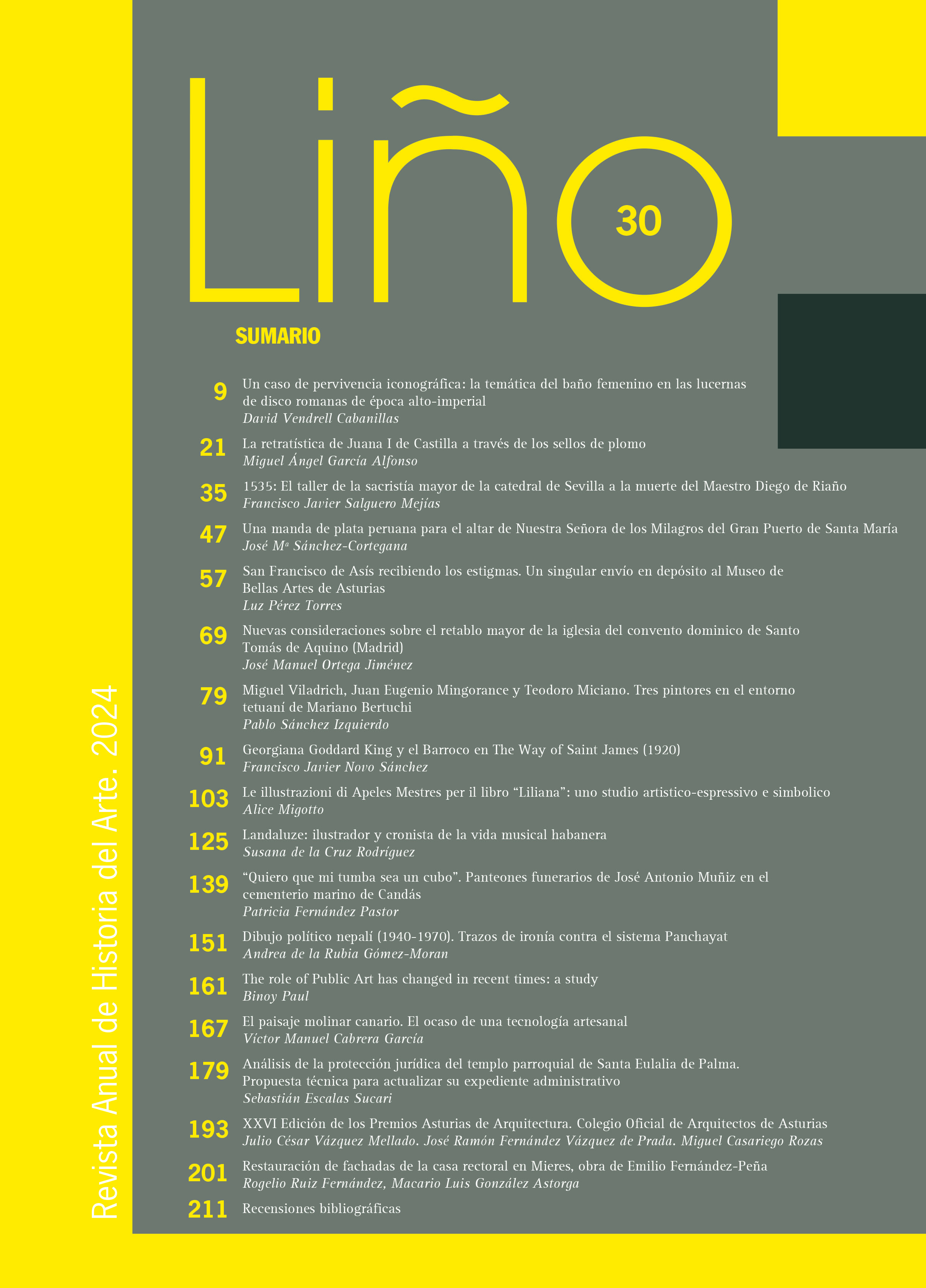Abstract
Through the visual representation of the national icons of the mountain, the King, and Kathmandu´s Cultural Heritage, Nepalese contemporary art is defined as a tool that contributes to romanticize the idea of the country as a magical Shangri-La. This article analyzes the idea of contemporary Nepali drawing through the concept of Nepaliness as a national strategy promoted in the times of the Panchayat regime (1962-1990). In a process that hybridizes the Western realism with the local culture, the aim of the regime was to unify the multicultural essence of Nepal around a single culture built around itself. The Nepalese avant-garde used the Nepaliness in their art-works in an almost forced way, being the irony the sole medium through which these artists could find a gap for their self-expression against this dictatorship.
References
Amatya, Gehendra Man (2005): Modern Art. Katmandú: Commercial Book.
Bangdel, Dina / Messerschmidt, Don (2004): Against the Current. The Life of Lain Singh Bangdel. Writer, Painter and Art Historian of Nepal. Bangkok: Orchid Press.
Bangdel, Lain Singh (1989): Stolen Images of Nepal. Katmandú: Royal Nepal Academy.
Baral, L.S. (2012): Autocratic Monarchy. Politics in Panchayat Nepal. Katmandú: Martin Chautari.
Gellner, David (2016): “The Idea of Nepal”. En: The Mahesh Chandra Regmi Lecture, Social Science Baha, Katmandú.
Hilton, James (1933): Lost Horizon. Reino Unido: Macmillan.
Hoftun, Martin/Raeper, William (1992): Spring Awakening. An Account of the 1990 Revolution in Nepal. Katmandu: Penguin Books.
Hutt, Michale (2010): The Life of Bhupi Sherchan. Poetry and Politics in Post-Rana Nepal. Nueva Delhi: Oxford University Press.
Hutt, Michael (1997): Nepal. A Guide to the Art and Architecture of the Kathmandu Valley. Escocia: Kiscadale Publications.
Mitter, Partha (2007): The Triumph of Modernism. India´s Artists and the Avant Garde 1922-1947. Oxford: Oxford University Press.
Mlecko, Joel D. (1982): “The Guru in Hindu Tradition”. En Numen, 29 [Núm.], 33-61. Doi: 10.2307/3269931.
Morimoto, Izumi (1967): “The Development of Local Entrepreneurship: a Case Study of a Tourist Area, Thamel in Kathmandu”. En Gellner, David/Ishii, Hiroshi/Nawa, Katsuo (eds.): Nepalis Inside and Outside Nepal. Social Dynamics in Northern South Asia. Nueva Delhi: Manohar, pp. 351-380
Sever, Adrian (1996): Aspects of Modern Nepalese History. Nueva Delhi: Vikas Publishing House.
Suyin, Han (1958): The Mountain is Young. Reino Unido: Jonathan Cape Ltd.
Teissier-Landgraf, Marie Claude (1995): The Russian from Belfort. 37 years journey by painter Nicolaï Michoutouchkine in Oceania. Vanuatu: Institute of Pacific Studies.
Toffin, Gerard (2005): “From Kin to Caste. The Role of Guthis in Newar Society and Culture”.
En: The Mahesh Chandra Regmi Lecture, Social Science Baha, Katmandú.

This work is licensed under a Creative Commons Attribution-NonCommercial-NoDerivatives 4.0 International License.

